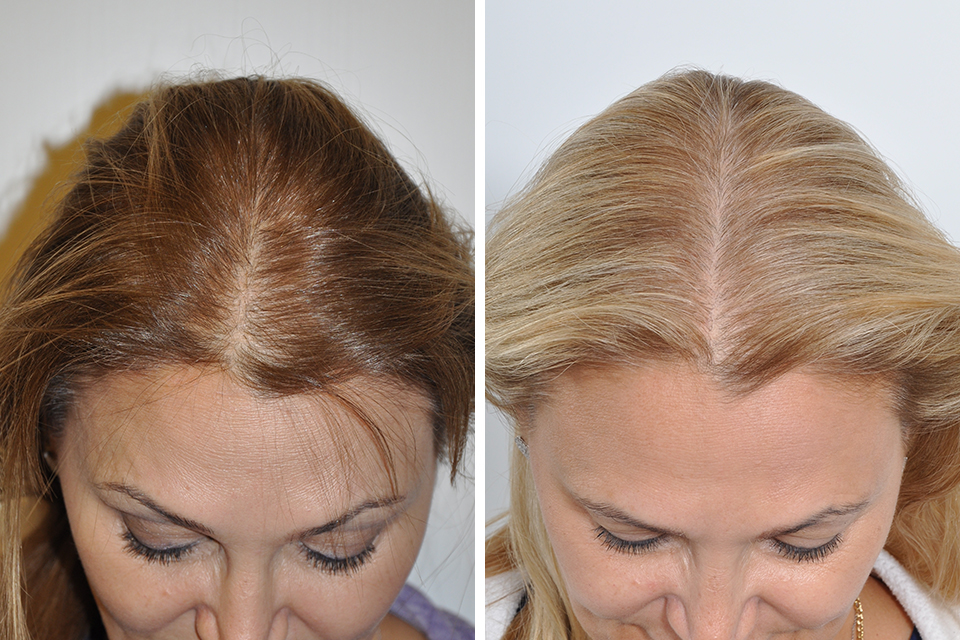Table Of Content

The extracted follicles are then transplanted into the recipient areas. Using a minuscule punch, typically measuring around 1 mm in diameter, we delicately create small circular incisions around individual follicular units within the donor area. These incisions facilitate the extraction and transplantation of healthy hair follicles, ensuring an effective and precise hair restoration process.
Standard FUE Hair Transplantation

FUE is a popular and minimally-invasive hair transplant procedure that involves extracting individual hair follicles from the donor area and transplanting them into the recipient area. This technique is used to restore hair loss due to male pattern baldness, traction alopecia, or other causes of baldness. The minimally invasive nature of the FUE method results in less discomfort, minimal scarring, and a considerably quicker recovery time than other methods. This is particularly beneficial for patients who prefer to wear their hair short, as any scarring is virtually undetectable. Furthermore, the advanced technique used in FUE provides a natural-looking result, improving not only the density but also the overall appearance of the patient's hair. The process involves using a micro-surgical extraction instrument, less than 1mm in diameter, to create tiny incisions around the hair follicles in the scalp.

Find more top doctors on
For a consultation with a hair restoration surgeon, access our Find A Doctor tool where you can search for an ISHRS member by location. Hairline (left) and crown (right) recipient sites are shown before grafts are placed. Then, the patient is administered anesthesia to numb the scalp in preparation for the procedure.
Best Hair Transplant: Los Angeles’s Top Hair Restoration Clinic
FUE hair transplant is a minimally invasive procedure that extracts individual hair follicles from a donor area, typically at the back or sides of the scalp, and transplants them to thinning or balding areas. In the hair restoration process, the Ziering team will draw from their extensive expertise and skill to ensure that the donor grafts are implanted in patterns that maximize hair density and mimic natural hairlines. Over time, the results will be indistinguishable from the pre-existing hairline. FUE hair transplants leave microscopic pinpoint scars in the donor region that are difficult to detect when the shaved hair grows back, a process that usually takes about two weeks to three weeks. FUE hair transplant can be a life-changing experience for individuals struggling with hair loss. While you may have to contend with some side effects and concerns, the result of a fuller, thicker head of hair and increased self-confidence is well worth the journey.
FUE Procedure Steps
When one hears about low-cost surgeries in the East, one tends to think that this practice is fraudulent. However, in healthy economies such as Turkey’s, affordable healthcare is normal. Hair transplant clinics in Turkey are not only inexpensive and good, they are, in fact, so affordable and so outstanding that Americans are willing to fly 13 hours to get there. Don’t fixate too much on how the scalp looks during this phase — redness and swelling are expected, and there may be scabbing as new grafts settle in. There’s generally nothing to worry about unless you notice major bleeding or discoloration in the area.
Dan Osborne, 32, undergoes a hair transplant after candidly revealing he had become 'paranoid' about his thinn - Daily Mail
Dan Osborne, 32, undergoes a hair transplant after candidly revealing he had become 'paranoid' about his thinn.
Posted: Mon, 06 Nov 2023 08:00:00 GMT [source]
Outlining Donor and Recipient Areas
Follicular Unit Transplantation is a process where a surgeon uses a strip of tissue, typically from the back of the scalp, to restore healthy hair follicles where needed. Follicular unit transplantation (FUT) and follicular unit excision (FUE) are the two main types of hair transplantation currently available. (2) However, there are other types of hair transplants, including hair plugs, artificial hair transplants, and hair cloning. This lack of visible scarring contributes greatly to patient confidence and is one of the main reasons why FUE is considered a superior method for hair transplantation. Furthermore, the absence of a linear scar means less post-operative discomfort and a more aesthetic result, adding to the overall positive experience of the procedure.
What is a FUE hair transplant?
The information contained herein is not a substitute for and should never be relied upon for professional medical advice. Always talk to your doctor about the risks and benefits of any treatment. Unlike FUT (also known as “strip harvesting”), FUE doesn’t require large incisions, stitches, punch or extensive scalpels to harvest strip of tissues via circular incisions. Understanding FUE is essential in making an informed decision about your hair restoration journey, so let’s move on to the intricacies of the procedure.
Who Is Suited to FUE Treatment?
You may not be eligible for a FUE hair transplant if you don’t have enough healthy or thick hair to transplant to the thinning or balding area. The best candidate for a FUE hair transplant is someone with thinning hair or balding who still has enough hair nearby to use for a transplant. Both DHI and FUE aim to achieve hair density and natural-looking results. Quick research on Google can help interested patients differentiate between suspicious practices and top-of-the-class medical centers that instill confidence. One of the clinics you can read about in Google reviews is Dr. Serkan Aygın Clinic.
Dr. Hughes Awarded Top FUE Hair Restoration Doctor
Ultimately, this is a question best answered by your surgeon during your hair transplant consultation. However, if you’d like a better idea bout the comparisons between FUE & FUT, you can read this article to educate yourself further before scheduling your hair restoration consultation. If you’re looking for an LA hair surgeon who can provide the best hair transplant Los Angeles has to offer, please reach out to Best Hair Transplant in Redondo Beach for a free consultation. We welcome new patients who wish to restore luscious locks to their scalps and boost their confidence.
At Genesis Lifestyle Medicine, we understand that every patient is unique. We offer both FUE and FUT procedures and have a team of specialists who can help you navigate this decision. Our goal is to ensure that you not only regain your hair but also your confidence. A variety of personal factors come into play when choosing between FUE and FUT. These include your budget, your pain tolerance, the speed at which you want to see results, the extent of your hair loss, and even your hairstyle.
Some of the possible benefits of using minoxidil after a hair transplant include increased hair growth and decreased hair loss. You don’t have to pay anything when you come to us for a hair restoration consultation. We are happy to discuss your goals with you and help you determine your best hair growth options at no cost. Once your hair follicles have been removed, our surgeons will transplant them to areas where you experience balding and thinning hair.
The effectiveness of the results will be limited by the number of transplantable hair follicles on the person’s scalp. This is where the term “hair follicle extraction” really comes into play. Once the follicles have been extracted and preserved, they are infused with PRP before transplantation. This not only increases the graft survival rate but also stimulates the growth of the transplanted hair, resulting in denser, healthier hair growth.
However, if you opt for sapphire FUE, the price range goes slightly up to $2,300-$35,000. This is because sapphire blades are custom-made, contributing to the higher cost of this advanced technique. You’ll likely need to pay for a FUE hair transplant out of pocket because most health insurance plans don’t cover cosmetic procedures like this. A FUE hair transplant costs between $4,000 and $15,000 per session.
In the UK, FUT hair transplant cost averages £3.50 to £4 per graft. Be aware that some clinics may charge for the initial consultation and aftercare, as well as for the procedure. Other clinics might offer all-inclusive package deals which cover the procedure and all the care you will need. During the first 2 to 8 weeks, you may experience an increase in hair shedding. Fortunately, the new hairs will typically grow back thicker and healthier. It gets worse when you read confusing, and sometimes conflicting, information on exactly how follicular unit extraction (FUE) works, its benefits, and if it’s right for you.
By getting FUE at our hair transplant clinic, you can trust that your scalp will remain scar-free. We understand that patients don’t want to deal with long, tedious recovery times after hair transplants. It’s important to mention that the FDA does not approve fake hair transplants. However, they may occasionally be used with an updated Biofibre for some types of alopecia. (20) They’re also used in other countries outside of America, although natural hair transplants are generally considered a safer option. FUE hair transplant surgery is versatile and suitable for different hair types, making it an ideal choice for a wide range of individuals.


No comments:
Post a Comment